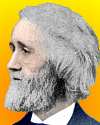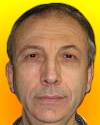
Born 14 Feb 1954.
Soviet mathematician whose work on quantum groups and in number theory was recognized with the award of a Fields Medal in 1990,when he was 36, and with the Institute for Low Temperature Physics and Engineering at Kharkov, Russia. His interests have been broad, moving from algebraic geometry and the theory of automorphic forms to the much newer theory of quantum groups relevant to physics, which he introduced in 1985. This groundbreaking concept was also developed independently by the Japanese mathematician Michio Jimbo.«
Soviet mathematician whose work on quantum groups and in number theory was recognized with the award of a Fields Medal in 1990,when he was 36, and with the Institute for Low Temperature Physics and Engineering at Kharkov, Russia. His interests have been broad, moving from algebraic geometry and the theory of automorphic forms to the much newer theory of quantum groups relevant to physics, which he introduced in 1985. This groundbreaking concept was also developed independently by the Japanese mathematician Michio Jimbo.«
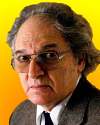
Born 14 Feb 1917; died 23 Oct 2011 at age 94.
Herbert Aaron Hauptman was an American mathematician and crystallographer who shared the 1985 Nobel Prize for Chemistry with Jerome Karle, with whom he collaborated, “for their outstanding achievements in the development of direct methods for the determination of crystal structures.” They developed mathematical methods for interpreting the patterns formed on photographic film by X rays diffracted through a crystalline chemical compound to determine its molecular structure. The knowledge of structure has two great benefits. One, in understanding the function of molecules in biological contexts, expecially those of “signal - receptor processes.” These include such processes as enzyme activity; antigen - antibody; and scent substance - scent receptor. Another is in studying the mechanism and chemical dynamics of reactions.«
Herbert Aaron Hauptman was an American mathematician and crystallographer who shared the 1985 Nobel Prize for Chemistry with Jerome Karle, with whom he collaborated, “for their outstanding achievements in the development of direct methods for the determination of crystal structures.” They developed mathematical methods for interpreting the patterns formed on photographic film by X rays diffracted through a crystalline chemical compound to determine its molecular structure. The knowledge of structure has two great benefits. One, in understanding the function of molecules in biological contexts, expecially those of “signal - receptor processes.” These include such processes as enzyme activity; antigen - antibody; and scent substance - scent receptor. Another is in studying the mechanism and chemical dynamics of reactions.«
On the Beauty of Science: A Nobel Laureate Reflects on the Universe, God, and the Nature of Discovery, by Herbert A. Hauptman and D. J. Grothe (Ed.). - book suggestion.
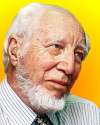
Born 14 Feb 1911; died 11 Feb 2009 at age 97.
Willem Johan Kolff was a Dutch-American physician and biomedical engineer who pioneered artificial organs. He invented the artificial kidney machine in 1943, before he emigrated to the U.S. (1950). In Spring 1955, the American Society for Artificial Internal Organs was formed. Kolff became its first president. He headed a team which invented the first totally artificial heart, a pneumatic pump, which was tested on 12 Dec1957, implanted within the chest of dog. It kept the 20.7-kg dog alive for 90 minutes. This was the first time an animal had lived with an implanted totally artificial heart. By 2 Dec 1982, under his supervision, the first fully artificial heart was implanted in a human patient. It was designed by Robert K. Jarvik, one of Kolff's students, that implanted the artificial heart which kept the patient, Barney Clark, alive for 112 days, thus proving the viability of such a procedure.«
Willem Johan Kolff was a Dutch-American physician and biomedical engineer who pioneered artificial organs. He invented the artificial kidney machine in 1943, before he emigrated to the U.S. (1950). In Spring 1955, the American Society for Artificial Internal Organs was formed. Kolff became its first president. He headed a team which invented the first totally artificial heart, a pneumatic pump, which was tested on 12 Dec1957, implanted within the chest of dog. It kept the 20.7-kg dog alive for 90 minutes. This was the first time an animal had lived with an implanted totally artificial heart. By 2 Dec 1982, under his supervision, the first fully artificial heart was implanted in a human patient. It was designed by Robert K. Jarvik, one of Kolff's students, that implanted the artificial heart which kept the patient, Barney Clark, alive for 112 days, thus proving the viability of such a procedure.«
Inventor for Life: The Story of W. J. Kolff, Father of Artificial Organs, by Herman Broers. - book suggestion.
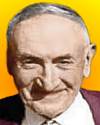
Born 14 Feb 1898; died 8 Feb 1974 at age 75. quotes
Swiss-American astronomer and physicist who proposed the existence of dark matter accounting for additional mass universe in the universe. His work on supernovas produced an improved theoretical understanding of these infrequent stars that have exceptional brightness for a short period. His career included contributions to jet propulsion and the physics of crystals, liquids and gases but he is best known for astrophysics. He searched for supernovas, and calculated their frequency as rare as one per millenium per typicl galaxy. After Lev Landau proposed extremely dense and compact neutron stars in 1932, Zwicky with Walter Baade suggested that they might be at the core of supernovas, which contributed to the development of the theory of stellar evolution. His abrasive personality delayed the acceptance of his innovative interpretations.«
Swiss-American astronomer and physicist who proposed the existence of dark matter accounting for additional mass universe in the universe. His work on supernovas produced an improved theoretical understanding of these infrequent stars that have exceptional brightness for a short period. His career included contributions to jet propulsion and the physics of crystals, liquids and gases but he is best known for astrophysics. He searched for supernovas, and calculated their frequency as rare as one per millenium per typicl galaxy. After Lev Landau proposed extremely dense and compact neutron stars in 1932, Zwicky with Walter Baade suggested that they might be at the core of supernovas, which contributed to the development of the theory of stellar evolution. His abrasive personality delayed the acceptance of his innovative interpretations.«
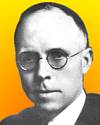
Born 14 Feb 1896; died 21 Sep 1950 at age 54.
Edward Arthur Milne was an English astrophysicist and cosmologist who is best known for his development of kinematic relativity. Poor eyesight prevented him from active service in WWI, he did important war service in research in ballistics and sound ranging, and problems related to the atmosphere of the earth.. From 1920-29, he studied problems of radiative equilibrium and the theory of stellar atmospheres. He extended work done earlier by Schuster and by Schwarzschild, which he combined in a mathematical interesting integral equation now known as Milne's integral equation. Later, he turned to the theory of stellar structure and cosmology. After 1932, he concentrated on a new form of relativity called kinematic relativity, an alternative to Einstein's general theory.
Edward Arthur Milne was an English astrophysicist and cosmologist who is best known for his development of kinematic relativity. Poor eyesight prevented him from active service in WWI, he did important war service in research in ballistics and sound ranging, and problems related to the atmosphere of the earth.. From 1920-29, he studied problems of radiative equilibrium and the theory of stellar atmospheres. He extended work done earlier by Schuster and by Schwarzschild, which he combined in a mathematical interesting integral equation now known as Milne's integral equation. Later, he turned to the theory of stellar structure and cosmology. After 1932, he concentrated on a new form of relativity called kinematic relativity, an alternative to Einstein's general theory.
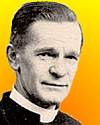
Born 14 Feb 1878; died 11 Jun 1936 at age 58.
Belgian-American organic chemist who studied reactions of acetylene and invented neoprene. He was ordained as a priest (1903) before earning his Ph.D. (1904). He did not pursue his own discovery of the reaction between acetylene and arsenic trichloride, but it led to the development of the chemical-warfare agent lewisite dubbed “the dew of death”, a poison gas and vesicant used in WW I. He collaborated with DuPont chemists in thepolymerization of acetylene and development of chloroprene, which in turn could be polymerized to the first really successful synthetic rubber, neoprene. This was superior to rubber in many ways such as in its resistance to sunlight, abrasion, and temperature extremes.
Belgian-American organic chemist who studied reactions of acetylene and invented neoprene. He was ordained as a priest (1903) before earning his Ph.D. (1904). He did not pursue his own discovery of the reaction between acetylene and arsenic trichloride, but it led to the development of the chemical-warfare agent lewisite dubbed “the dew of death”, a poison gas and vesicant used in WW I. He collaborated with DuPont chemists in thepolymerization of acetylene and development of chloroprene, which in turn could be polymerized to the first really successful synthetic rubber, neoprene. This was superior to rubber in many ways such as in its resistance to sunlight, abrasion, and temperature extremes.
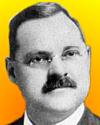
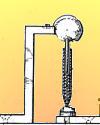
Crystal detector
American electrical engineer whose invention of the crystal detector was one of the first devices widely used for receiving radio broadcasts (a key component, until superseded by the triode vacuum tube, and later the transistor). His patent of 20 Nov 1906 described it as “a means for receiving intelligence communicated by electric waves.” He was also one of the first scientists to demonstrate the wireless electromagnetic transmission of speech. In 1899, he transmitted a spoken message over a distance of ten miles. Pickard conducted numerous experiments to determine the effect of the sun and sunspots on radio. In his study of the polarisation of radio waves, he contributed to development of the direction finder, and noted as early as 1908 that errors in reading radio compasses might be caused by buildings, trees and other objects. more
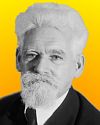
Born 14 Feb 1876; died 24 Dec 1950 at age 74.
Russian geographer and zoologist who established the foundations of limnology in Russia with his systematic studies on the physical, chemical, and biological conditions of fresh waters, particularly of lakes. Important, too, was his work in ichthyology, which yielded much useful data on the paleontology, anatomy, and embryology of fishes in Russia.
Russian geographer and zoologist who established the foundations of limnology in Russia with his systematic studies on the physical, chemical, and biological conditions of fresh waters, particularly of lakes. Important, too, was his work in ichthyology, which yielded much useful data on the paleontology, anatomy, and embryology of fishes in Russia.
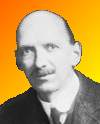
(EB)
Born 14 Feb 1869; died 15 Nov 1959 at age 90.
Scottish physicist who shared (with Arthur H. Compton), the 1927 Nobel Prize for Physics for his invention of the Wilson cloud chamber, which became widely used in the study of radioactivity, X rays, cosmic rays, and other nuclear phenomena. His discovery was a method of rendering visible the tracks of such electrically charged particles. It is based upon the formation of clouds, which develop when sufficiently moist air is suddenly expanded, thus dropping the temperature below the dew-point. Thereafter, vapour condenses into small drops, formed round dust particles, or even, an electrically charged atomic particle. The formation of droplets is so dense that photographs show continuous tracks of particles travelling through the chamber as white lines.
Scottish physicist who shared (with Arthur H. Compton), the 1927 Nobel Prize for Physics for his invention of the Wilson cloud chamber, which became widely used in the study of radioactivity, X rays, cosmic rays, and other nuclear phenomena. His discovery was a method of rendering visible the tracks of such electrically charged particles. It is based upon the formation of clouds, which develop when sufficiently moist air is suddenly expanded, thus dropping the temperature below the dew-point. Thereafter, vapour condenses into small drops, formed round dust particles, or even, an electrically charged atomic particle. The formation of droplets is so dense that photographs show continuous tracks of particles travelling through the chamber as white lines.
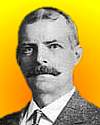
Born 14 Feb 1860; died 3 Nov 1939 at age 79.
Swedish-born American economic geologist who was a leader in the science of ore deposition and the use of the petrographic microscope. He helped establish that veins of metal and similar deposits are created by hot solutions derived from molten rock below, not by water seepage from above. His interest in geology began as a youth from reading a book on mineralogy and a visit at the age of 10 to the west coast of Sweden where rocks are beautifully exposed. By the time he was 17 he had seen the mines of central Sweden and the famous old silver workings of Kongsberg in Norway. As a young mining geologist, he emigrated to America in Jun 1883, drawn by the rapidly growing mining industry of the Western United States.
Swedish-born American economic geologist who was a leader in the science of ore deposition and the use of the petrographic microscope. He helped establish that veins of metal and similar deposits are created by hot solutions derived from molten rock below, not by water seepage from above. His interest in geology began as a youth from reading a book on mineralogy and a visit at the age of 10 to the west coast of Sweden where rocks are beautifully exposed. By the time he was 17 he had seen the mines of central Sweden and the famous old silver workings of Kongsberg in Norway. As a young mining geologist, he emigrated to America in Jun 1883, drawn by the rapidly growing mining industry of the Western United States.
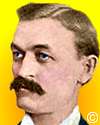
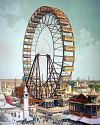
George Washington Gale Ferris, Jr. was an American engineer and inventor who invented the giant observation wheel for the World’s Columbian Exposition, Chicago, Illinois (1893), created to rival the Eiffel Tower, which had been built by Gustave Eiffel for the 1889 World's Fair in Paris. Ferris began as a construction engineer on railroad runnel and bridge projects, and later established his own business as Ferris & Company. His audacious idea for the observation wheel took $400,000 of his own money for its financing, but its construction was delayed so that its opening on 21 Jun 1893 was over a month after the Exposition had opened. His life ended only three years later (perhaps by suicide) at age 37. He was on the edge of bankrupty, unable to claim enough as his share of the profits from his machine to cover his expenses, and shortly after his wife left him.« more
Circles in the Sky the Life and Times of George Ferris, by Richard Weingardt. - book suggestion.
Born 14 Feb 1858; died 2 Aug 1895 at age 37.
Scottish geologist, naturalist and explorer who was the first European to enter several regions of eastern Africa and whose writings are outstanding contributions to geographical knowledge, exceptional for their careful records and surveys. Thomson's gazelle (Gazella thomsoni), the most common gazelle of eastern Africa, was named for him.
Scottish geologist, naturalist and explorer who was the first European to enter several regions of eastern Africa and whose writings are outstanding contributions to geographical knowledge, exceptional for their careful records and surveys. Thomson's gazelle (Gazella thomsoni), the most common gazelle of eastern Africa, was named for him.
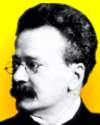
Born 14 Feb 1850; died 4 Aug 1920 at age 70. quotes
Irish engineer who was early to conceive the Earth’s interior as having a molten core that very slowly moved heat by convection inside a solid mantle. He began his career working as an assistant to Lord Kelvin at the University of Glasgow, then become a professor of mechanical engineering. He also had experience in electrical engineering. Whereas Kelvin estimated the age of the Earth based on just conduction of heat, Perry guessed the exterior mantle was only 13 miles thick. Using his own convection model, Perry calculated an age of two to three billion years (coming close to the modern value accepted as about 4.5 billion years). Perry's theory was published in Nature in 1895, but its significance was not accepted by geologists of his time.«
Irish engineer who was early to conceive the Earth’s interior as having a molten core that very slowly moved heat by convection inside a solid mantle. He began his career working as an assistant to Lord Kelvin at the University of Glasgow, then become a professor of mechanical engineering. He also had experience in electrical engineering. Whereas Kelvin estimated the age of the Earth based on just conduction of heat, Perry guessed the exterior mantle was only 13 miles thick. Using his own convection model, Perry calculated an age of two to three billion years (coming close to the modern value accepted as about 4.5 billion years). Perry's theory was published in Nature in 1895, but its significance was not accepted by geologists of his time.«
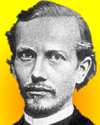
Born 14 Feb 1839; died 29 Aug 1873 at age 34. quotes
German mathematician who worked on the theory of complex numbers, the theory of functions and the history of mathematics. In his education at the University of Leipzig, he learned physics from his father, Wilhelm Gottlieb Hankel. He studied mathematics there taught by August Möbius, followed by a year at Göttingen with Bernhard Riemann and then completed his doctorate at Berlin under Karl Weierstrass and Leopold Kronecker. Although he died so young, aged 34, he left a legacy of the Hankel transform and the Hankel matrix. The writings he left were at times filled with errors, and at other times showed insight, especially concerning the work of Hermann Grassman to the calculus for vectors and the work on infinite series by Bernard Bolzano.«
German mathematician who worked on the theory of complex numbers, the theory of functions and the history of mathematics. In his education at the University of Leipzig, he learned physics from his father, Wilhelm Gottlieb Hankel. He studied mathematics there taught by August Möbius, followed by a year at Göttingen with Bernhard Riemann and then completed his doctorate at Berlin under Karl Weierstrass and Leopold Kronecker. Although he died so young, aged 34, he left a legacy of the Hankel transform and the Hankel matrix. The writings he left were at times filled with errors, and at other times showed insight, especially concerning the work of Hermann Grassman to the calculus for vectors and the work on infinite series by Bernard Bolzano.«
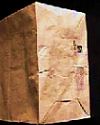
Born 14 Feb 1838; died 12 Oct 1914 at age 76.
Prolific American inventor of machines and mechanisms for a variety of industrial and everyday purposes. She created, but did not patent, her first invention at age 12, a cutoff safety device that shut down a power loom automatically when a steel-tipped shuttle fell out. Her first patent came in 1870 when she invented a machine to make square-bottomed paper bags, an improvement over V-shaped ones. The 27 patents she eventually held for inventions included a dress and skirt shield (1883), a clasp for robes (1884), a spit (1885)and even a new valve sleeve for an auto engine. She also received six patents over a span of years for machines used in the manufacturing of shoes. She never married, and her creative genius never made her rich. As a self-supporting working-class woman, she had rarely been able to wait for royalties but sold the rights to her inventions outright. Although she was not the first woman to receive a patent, she was one of the most prolific.*
Prolific American inventor of machines and mechanisms for a variety of industrial and everyday purposes. She created, but did not patent, her first invention at age 12, a cutoff safety device that shut down a power loom automatically when a steel-tipped shuttle fell out. Her first patent came in 1870 when she invented a machine to make square-bottomed paper bags, an improvement over V-shaped ones. The 27 patents she eventually held for inventions included a dress and skirt shield (1883), a clasp for robes (1884), a spit (1885)and even a new valve sleeve for an auto engine. She also received six patents over a span of years for machines used in the manufacturing of shoes. She never married, and her creative genius never made her rich. As a self-supporting working-class woman, she had rarely been able to wait for royalties but sold the rights to her inventions outright. Although she was not the first woman to receive a patent, she was one of the most prolific.*
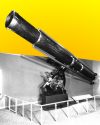
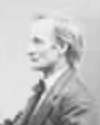
Elder son in the American family of telescope makers and astronomers, Alvan Clark & Sons of Cambridge, Mass., who figured importantly in the great expansion of astronomical facilities which occurred during the second half of the 19th century. Before the family business began, George made a telescope in 1844 out of the melted-down brass of his school's broken dinner bell. His father, Alvan Clark, was at the time an established portrait painter, but his son's interest also spurred his father to begin making refractor telescopes. (Refractor telescopes use paired lenses to focus light.) The father taught himself to be a master optician, and eventually in business with his sons made the finest refractor telescopes of their time including five of the world's largest.«Images (left) Dearborn Telescope, circa 1864; (right): George Bassett Clark
Alvan Clark & Sons, Artists in Optics, by Warner and Ariail. - book suggestion.
Born 14 Feb 1819; died 17 Feb 1890 at age 71. quotes
American inventor who developed the typewriter. A printer and newspaper editor by trade, he developed a page numbering machine in the mid-1800s. A friend suggested he modify the machine into a letter-printing device. Sholes patented the typewriter in 1868 and sold the rights to Remington in 1873. more
American inventor who developed the typewriter. A printer and newspaper editor by trade, he developed a page numbering machine in the mid-1800s. A friend suggested he modify the machine into a letter-printing device. Sholes patented the typewriter in 1868 and sold the rights to Remington in 1873. more
The Typewriter: An Illustrated History, by Typewriter Topics. - book suggestion.
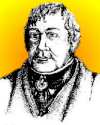
Born 14 Feb 1793; died 28 Feb 1875 at age 82.
Prolific English inventor who built technically successful steam carriages a half century before the advent of the gasoline-powered automobile. His carriage successfully travelled between London and Bath at an average speed 15 mph. He built several more and opened a passenger service. However, powerful opposition from horse-coach companies ensured that they were soon taxed out of existence. Another of his inventions was the "Bude Light" which lit the House of Commons for 60 years. It was a standard oil lamp with oxygen gas introduced into the middle of the flame. The unburned carbon in the oil flame burned with an intense, white light instead of the weak yellow flame of the oil lamp. He introduced the use of limelight to lighthouses.
Prolific English inventor who built technically successful steam carriages a half century before the advent of the gasoline-powered automobile. His carriage successfully travelled between London and Bath at an average speed 15 mph. He built several more and opened a passenger service. However, powerful opposition from horse-coach companies ensured that they were soon taxed out of existence. Another of his inventions was the "Bude Light" which lit the House of Commons for 60 years. It was a standard oil lamp with oxygen gas introduced into the middle of the flame. The unburned carbon in the oil flame burned with an intense, white light instead of the weak yellow flame of the oil lamp. He introduced the use of limelight to lighthouses.
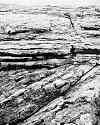
Rock strata
Born 14 Feb 1722; died 20 Jun 1773 at age 51.
German geologist who originated the idea of stratigraphic formations. He was one of the first actually to make recorded measurements of sections of stratified rock. His major work, Historia terrae et maris, ex historia Thuringiae, per montium descriptionem, eruta (1861) is unusual for its purely geological orientation. It contains the general principles of historical geology, the extensive description of the Thüringen Wald, and explantions of the causes of dynamic changes in the earth's crust and the origin of veins and their minerals. He developed the concept of a strata, a rock formation as a depositional unit representing a certain epoch of time. Such formations were not thrown out at random, but deposited initially in a horizontal position as part of a clearly delineated, orderly succession under circumstances that may be inferred from the lithology and characteristic fossil assemblage. Recent deposits in his district with only terrestrial fossils, he thought, were from “the action of a great deluge.” He also made the first published geological map of Germany and adjacent areas.
German geologist who originated the idea of stratigraphic formations. He was one of the first actually to make recorded measurements of sections of stratified rock. His major work, Historia terrae et maris, ex historia Thuringiae, per montium descriptionem, eruta (1861) is unusual for its purely geological orientation. It contains the general principles of historical geology, the extensive description of the Thüringen Wald, and explantions of the causes of dynamic changes in the earth's crust and the origin of veins and their minerals. He developed the concept of a strata, a rock formation as a depositional unit representing a certain epoch of time. Such formations were not thrown out at random, but deposited initially in a horizontal position as part of a clearly delineated, orderly succession under circumstances that may be inferred from the lithology and characteristic fossil assemblage. Recent deposits in his district with only terrestrial fossils, he thought, were from “the action of a great deluge.” He also made the first published geological map of Germany and adjacent areas.
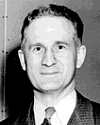
Died 14 Feb 2000 at age 93 (born 10 Dec 1906).
Walter Henry Zinn was a Canadian-American nuclear physicist who contributed to the U.S. atomic bomb project during World War II and to the development of the nuclear reactor. He collaborated with Leo Szilard, investigating atomic fission. In 1939, they demonstrated that uranium underwent fission when bombarded with neutrons and that part of the mass was converted into energy (given by E = mc²). This work led him into research into the construction of the atomic bomb during WW II. After the war Zinn started the design of an atomic reactor and, in 1951, he built the first breeder reactor. In a breeder reactor, the core is surrounded by a “blanket” of uranium-238 and neutrons from the core convert this into plutonium-239, which can also be used as a fission fuel.
Walter Henry Zinn was a Canadian-American nuclear physicist who contributed to the U.S. atomic bomb project during World War II and to the development of the nuclear reactor. He collaborated with Leo Szilard, investigating atomic fission. In 1939, they demonstrated that uranium underwent fission when bombarded with neutrons and that part of the mass was converted into energy (given by E = mc²). This work led him into research into the construction of the atomic bomb during WW II. After the war Zinn started the design of an atomic reactor and, in 1951, he built the first breeder reactor. In a breeder reactor, the core is surrounded by a “blanket” of uranium-238 and neutrons from the core convert this into plutonium-239, which can also be used as a fission fuel.
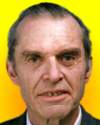
Died 14 Feb 1989 at age 89 (born 4 Jan 1900).
American ornithologist, a former curator of ornithology at the Academy of Natural Science in Philadelphia, was long a leading expert on the birds of the West Indies. In his career, he traveled up the Amazon (1925), and visited more than 100 Caribbean islands for his studies. He proved that birds of the Caribbean originated in North America, rather than South America. The Birds of the West Indies book (1936), that he wrote, was seen by author Ian Fleming, an avid bird watcher. Fleming later told Bond’s wife that he named his James Bond thrillers’ hero came from the cover of that book. Because it struck Fleming as ordinary—but masculine-sounding—the ornithologist’s name has entered literary history.«
American ornithologist, a former curator of ornithology at the Academy of Natural Science in Philadelphia, was long a leading expert on the birds of the West Indies. In his career, he traveled up the Amazon (1925), and visited more than 100 Caribbean islands for his studies. He proved that birds of the Caribbean originated in North America, rather than South America. The Birds of the West Indies book (1936), that he wrote, was seen by author Ian Fleming, an avid bird watcher. Fleming later told Bond’s wife that he named his James Bond thrillers’ hero came from the cover of that book. Because it struck Fleming as ordinary—but masculine-sounding—the ornithologist’s name has entered literary history.«
The Real James Bond: A True Story of Identity Theft, Avian Intrigue, and Ian Fleming, by Jim Wright. - book suggestion.
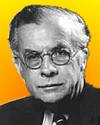
1951
Died 14 Feb 1975 at age 87 (born 22 Jun 1887). quotes
Julian Sorell Huxley was an English biologist and writer, philosopher, and educator who greatly influenced the modern development of embryology, systematics, and studies of behaviour and evolution. He studied the differential growth of different body parts, Problems of Relative Growth (1932). He wrote many popular articles and essays, especially on ornithology and evolution, and co-produced several history films, including the Private Life of the Gannet (1934). No stranger to controversy, Huxley supported the contentious view that the human race could benefit from planned parenthood using artificial insemination by donors of “superior characteristics.” (He was the grandson of biologist Thomas H. Huxley and brother of Aldous Huxley.)
Julian Sorell Huxley was an English biologist and writer, philosopher, and educator who greatly influenced the modern development of embryology, systematics, and studies of behaviour and evolution. He studied the differential growth of different body parts, Problems of Relative Growth (1932). He wrote many popular articles and essays, especially on ornithology and evolution, and co-produced several history films, including the Private Life of the Gannet (1934). No stranger to controversy, Huxley supported the contentious view that the human race could benefit from planned parenthood using artificial insemination by donors of “superior characteristics.” (He was the grandson of biologist Thomas H. Huxley and brother of Aldous Huxley.)
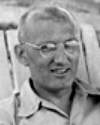
Died 14 Feb 1950 at age 44 (born 22 Oct 1905).
Karl Guthe Jansky was an American electrical engineer and radio engineer who discovered cosmic radio emissions. In 1932, Jansky was at Bell Laboratories in New Jersey, investigating the crackling static noises that plagued short wave overseas telephone reception. He found certain radio waves coming from the sky—every 23 hr 56 min—from the direction of Sagittarius toward the center of the Milky Way. When he published his results, he suggested that the radio emission was somehow connected to the Milky Way. Jansky thought that the radio signals originated not from stars, but from ionized interstellar gas. At the age of 26, Jansky had made a historic discovery—that celestial bodies could emit radio waves as well as light waves.«
Karl Guthe Jansky was an American electrical engineer and radio engineer who discovered cosmic radio emissions. In 1932, Jansky was at Bell Laboratories in New Jersey, investigating the crackling static noises that plagued short wave overseas telephone reception. He found certain radio waves coming from the sky—every 23 hr 56 min—from the direction of Sagittarius toward the center of the Milky Way. When he published his results, he suggested that the radio emission was somehow connected to the Milky Way. Jansky thought that the radio signals originated not from stars, but from ionized interstellar gas. At the age of 26, Jansky had made a historic discovery—that celestial bodies could emit radio waves as well as light waves.«
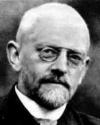
Died 14 Feb 1943 at age 81 (born 23 Jan 1862). quotes
German mathematician who reduced geometry to a series of axioms and contributed substantially to the establishment of the formalistic foundations of mathematics. In his book, Foundations of Geometry, he presented the first complete set of axioms since Euclid. His work in 1909 on integral equations led to 20th-century research in functional analysis (in which functions are studied as groups.) Today Hilbert's name is often best remembered through the concept of Hilbert space in quantum physics, a space of infinite dimensions.
German mathematician who reduced geometry to a series of axioms and contributed substantially to the establishment of the formalistic foundations of mathematics. In his book, Foundations of Geometry, he presented the first complete set of axioms since Euclid. His work in 1909 on integral equations led to 20th-century research in functional analysis (in which functions are studied as groups.) Today Hilbert's name is often best remembered through the concept of Hilbert space in quantum physics, a space of infinite dimensions.
The Theory of Algebraic Number Fields, by David Hilbert, I.T. Adamson. - book suggestion.
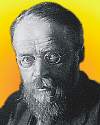
c. 1925
Died 14 Feb 1933 at age 68 (born 19 Sep 1864). quotes
Carl Franz Joseph Erich Correns was a German botanist and plant geneticist who in 1900, independent of, but simultaneously with, the biologists Erich Tschermak von Seysenegg and Hugo de Vries, rediscovered Gregor Mendel's historic paper outlining the principles of heredity. In attempting to ascertain the extent to which Mendel's laws are valid, he undertook a classic study of non-Mendelian heredity in variegated plants, such as the four-o'clock (Mirabilis jalapa) which he established (1909) as the first conclusive example of extrachromosomal, or cytoplasmic, inheritance (cases in which certain characteristics of the progeny are determined by factors in the cytoplasm of the female sex cell).
Carl Franz Joseph Erich Correns was a German botanist and plant geneticist who in 1900, independent of, but simultaneously with, the biologists Erich Tschermak von Seysenegg and Hugo de Vries, rediscovered Gregor Mendel's historic paper outlining the principles of heredity. In attempting to ascertain the extent to which Mendel's laws are valid, he undertook a classic study of non-Mendelian heredity in variegated plants, such as the four-o'clock (Mirabilis jalapa) which he established (1909) as the first conclusive example of extrachromosomal, or cytoplasmic, inheritance (cases in which certain characteristics of the progeny are determined by factors in the cytoplasm of the female sex cell).
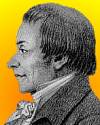
Died 14 Feb 1845 at age 82 (born 14 Jul 1762).
French educator who reformed the French educational system during the French Revolution. He was a respected scientist of the time, and observed the development of the telegraph by Ignace Chappe. On 2 Jul 1793, Joseph Lakanal filed a report to the legislature on Chappe's behalf, requesting officially that the mayors of the three communities where the first telegraphs were being erected would be ordered to take measures for the protection of the telegraphs. On 25 Feb 1795, Joseph Lakanal defined on behalf of the French Revolution an “educational utopia” which would “put an end to inequalities of development that affected a citizen's capacities for judgment.”
French educator who reformed the French educational system during the French Revolution. He was a respected scientist of the time, and observed the development of the telegraph by Ignace Chappe. On 2 Jul 1793, Joseph Lakanal filed a report to the legislature on Chappe's behalf, requesting officially that the mayors of the three communities where the first telegraphs were being erected would be ordered to take measures for the protection of the telegraphs. On 25 Feb 1795, Joseph Lakanal defined on behalf of the French Revolution an “educational utopia” which would “put an end to inequalities of development that affected a citizen's capacities for judgment.”
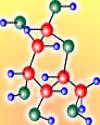
Glucose
Died 14 Feb 1833 at age 68 (born 19 Feb 1764).
Gottlieb Sigismund Constantin Kirchhof was a German-Russian chemist who applied the first controlled catalytic reaction to produce glucose, developed a method for refining vegetable oil, and also experimented with brewing and fermentation. He formed the smaller molecule of glucose (the commonest simple sugar) by the catalytic enzyme hydrolysis of the large starch molecule (1811). The method he discovered for the industrial refining of vegetable oil enabled him to established a factory in St. Petersburg capable of producing two tons per day. In other investigations, he provided the groundwork for scientific study of the brewing and fermentation processes.«
Gottlieb Sigismund Constantin Kirchhof was a German-Russian chemist who applied the first controlled catalytic reaction to produce glucose, developed a method for refining vegetable oil, and also experimented with brewing and fermentation. He formed the smaller molecule of glucose (the commonest simple sugar) by the catalytic enzyme hydrolysis of the large starch molecule (1811). The method he discovered for the industrial refining of vegetable oil enabled him to established a factory in St. Petersburg capable of producing two tons per day. In other investigations, he provided the groundwork for scientific study of the brewing and fermentation processes.«
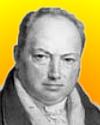
Died 14 Feb 1831 at age 59 (born 22 Aug 1771). quotes
British engineer and inventor of the metal lathe and other devices. Maudslay was apprenticed to locksmith Joseph Bramah, and soon became his foreman. When he left to go into business for himself, Maudslay's first job was construction of machinery for the ship block (pulley) factory of Sir Marc Isambard Brunel. Through three decades during the Industrial Revolution, Maudslay invented various important machines, but of these the metal lathe particularly noteworthy. He also invented methods for printing calico cloth and for desalting seawater for ships' boilers. He perfected a measuring machine that was accurate to 0.0001 inch, and produced for his workshop accurate standard planes. more
British engineer and inventor of the metal lathe and other devices. Maudslay was apprenticed to locksmith Joseph Bramah, and soon became his foreman. When he left to go into business for himself, Maudslay's first job was construction of machinery for the ship block (pulley) factory of Sir Marc Isambard Brunel. Through three decades during the Industrial Revolution, Maudslay invented various important machines, but of these the metal lathe particularly noteworthy. He also invented methods for printing calico cloth and for desalting seawater for ships' boilers. He perfected a measuring machine that was accurate to 0.0001 inch, and produced for his workshop accurate standard planes. more
Henry Maudslay & the Pioneers of the Machine Age, by John Cantrell and Gillian Cookson (eds). - book suggestion.
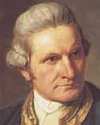
Died 14 Feb 1779 at age 50 (born 27 Oct 1728). quotes
English seaman who was the first of the really scientific navigators. Captain Cook spent several years surveying the coasts of Labrador and Newfoundland. He observed a solar eclipse on 5 Aug 1766 near Cape Ray, Newfoundland. On the first of three expeditions into the Pacific (1768) he took Joseph Banks as the ship's botanist to study the flora and fauna discovered. (This practice of carrying a naturalist took place some 75 years before Charles Darwin's famous voyage.) Cook observed the transit of Venus on this voyage from the island of Tahiti on 3 Jun 1769. This would help scientists plot the distance between the sun to the earth. His geographical discoveries made him the most famous navigator since Magellan. He was killed by cannibal natives in Hawaii.
English seaman who was the first of the really scientific navigators. Captain Cook spent several years surveying the coasts of Labrador and Newfoundland. He observed a solar eclipse on 5 Aug 1766 near Cape Ray, Newfoundland. On the first of three expeditions into the Pacific (1768) he took Joseph Banks as the ship's botanist to study the flora and fauna discovered. (This practice of carrying a naturalist took place some 75 years before Charles Darwin's famous voyage.) Cook observed the transit of Venus on this voyage from the island of Tahiti on 3 Jun 1769. This would help scientists plot the distance between the sun to the earth. His geographical discoveries made him the most famous navigator since Magellan. He was killed by cannibal natives in Hawaii.
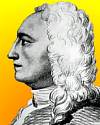
Died 14 Feb 1744 at age 61 (born 16 Apr 1682).
British mathematician and inventor who perfected methods for grinding and polishing telescope lenses. Hadley improved the reflecting telescope (first introduced by Newton in 1668) and produced the first of its kind having sufficient accuracy and power to be useful in astronomy. It had a 6 inch mirror. He is also known for the reflecting octant (1730) used at sea to measure the altitude of the Sun or a celestial body above the horizon to within one second of arc. It was the ancestor of the modern nautical sextant. He was a prominent member of the Royal Society, of which he was vice-president from 21 Feb 1728. John Hadley was the older brother of George Hadley.«
British mathematician and inventor who perfected methods for grinding and polishing telescope lenses. Hadley improved the reflecting telescope (first introduced by Newton in 1668) and produced the first of its kind having sufficient accuracy and power to be useful in astronomy. It had a 6 inch mirror. He is also known for the reflecting octant (1730) used at sea to measure the altitude of the Sun or a celestial body above the horizon to within one second of arc. It was the ancestor of the modern nautical sextant. He was a prominent member of the Royal Society, of which he was vice-president from 21 Feb 1728. John Hadley was the older brother of George Hadley.«

In 2003, Dolly, the world-famous first cloned sheep, was put down, at age about 6½ years. She had been suffering from a progressive lung disease. Dolly, a Finn Dorset sheep, was born at the Roslin Institute, Edinburgh, Scotland on 5 Jul 1996. This accomplishment, the first mammal cloned from an adult cell was announced on 23 Feb 1997. Using microscopic needles, scientists had replaced the nucleus of an egg cell with the nucleus from a parent cell (an udder cell, in Dolly's case). The resulting embryo was implanted into the womb of a third, surrogate sheep. Somehow, the egg cell reprogrammed the donated DNA contained within its new nucleus. Normal life expectancy of a Finn Dorset sheep is about 11 to 12 years. Dolly's early death, like her birth, raised new controversy about the wisdom of cloning.«
The Second Creation: Dolly and the Age of Biological Control, by Ian Wilmut, et al. - book suggestion.
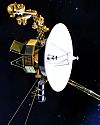
In 1990, radio signals were received from the U.S. space probe Voyager 1 that it successfully completed a four-hour series of about 60 images looking back into the Solar System, of the sun and six planets. The signals took 5-hr 26-min to travel 3,700 million miles back to Earth. The data was held on board the spacecraft until transmitted back to tracking stations on Earth later in the following month. The delay was while other planetary missions had a higher priority for use of the receiving antennas. The images were then assembled into a large mozaic, the “Family Portrait of the Planets.” Voyager 1 was launched on 5 Sep 1977, had travelled to the outer reaches of the solar system and climbed high above the plane of the orbits of the planets, enabling it to look down on the Solar System— the only spacecraft ever to do so.«
In 1984, six-year-old Stormie Jones from Texas became the world's first heart-liver double transplant recipient. She had a heart attack at age 6. She had inherited a receptor deficiency from both parents. Having virtually no way to rid her body of cholesterol, she had blood levels of cholesterol almost five times the safe level. The operation transplanted a heart to replace her damaged one, and a liver which possessed the normal number of cholesterol receptors. Drs. Thomas E. Starzl and Henry T. Bahnson performed the operation at Children's Hospital of Pittsburgh. Followed by drug treatment, her cholesterol level dropped to the normal range. She lived until age 13. On 11 Nov 1990, she died of a possible heart infection.
In 1980, the U.S. launched the Solar Maximum Mission Observatory to study solar flares.
In 1978, the first "micro on a chip" was patented (Texas Instruments).
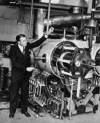
Ernest Lawrence
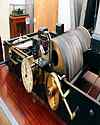
In 1933, the world’s first telephone speaking clock was inaugurated at the Paris Observatory to provide the time to anyone dialling ODEON 8400. Like a movie film optical soundtrack, the spoken words needed were recorded onto sheets of film with varying bright and dark lines corresponding to sound variation. Three strips were wrapped around a broad cyclinder, one each for hour, minute and second. The drum was turned by an electric motor controlled by a pendulum clock. A photocell picked up light reflected from the lines. Its electrical impulses were amplified to reproduce the spoken words. It could serve up to 20 simultaneous callers. By the end of the year, the New York Times reported it served an average of 11,000 inquiries per day.«
In 1888, Thomas A. Edison was issued a patent for a "Telephone-Transmitter" (No. 278,044).
In 1876, inventors Alexander Graham Bell and Elisha Gray applied separately for patents related to the telephone. The U.S. Supreme Court eventually ruled Bell the rightful inventor.
In 1803, an apple parer by Moses Coats was issued a U.S. patent.
In 1794, the first US patent for textile (carding & spinning) machinery was granted to James Davenport of Philadelphia.
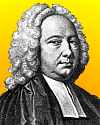
In 1747, a paper on the discovery of Earth's wobbling motion on its axis by British astronomer, James Bradley was read at the Royal Society. For this variation, he coined the name nutation (from Latin “nutare” to nod). Bradley first noticed the fluctuation during his studies of parallax at Molyneux's observatory. Attributing it to the moon's gravitational influence, he withheld any announcement until he had observed a full cycle of the motion of the moon's nodes, taking about 18.6 years. In 1748, he was honored with the Copley Medal of the Royal Society.«
